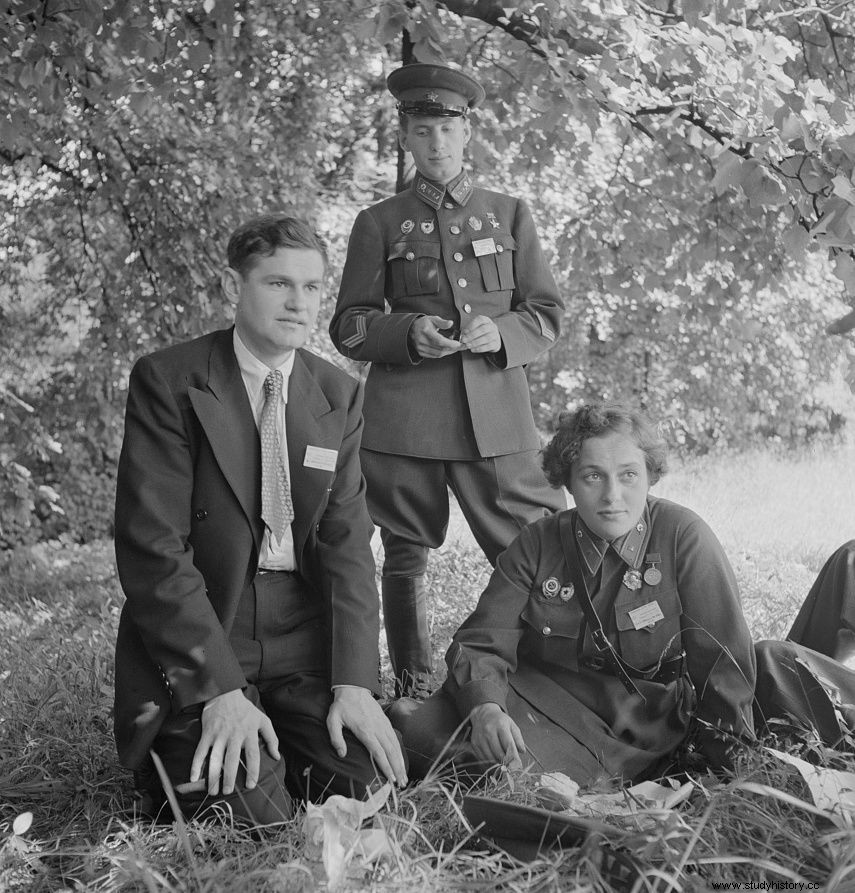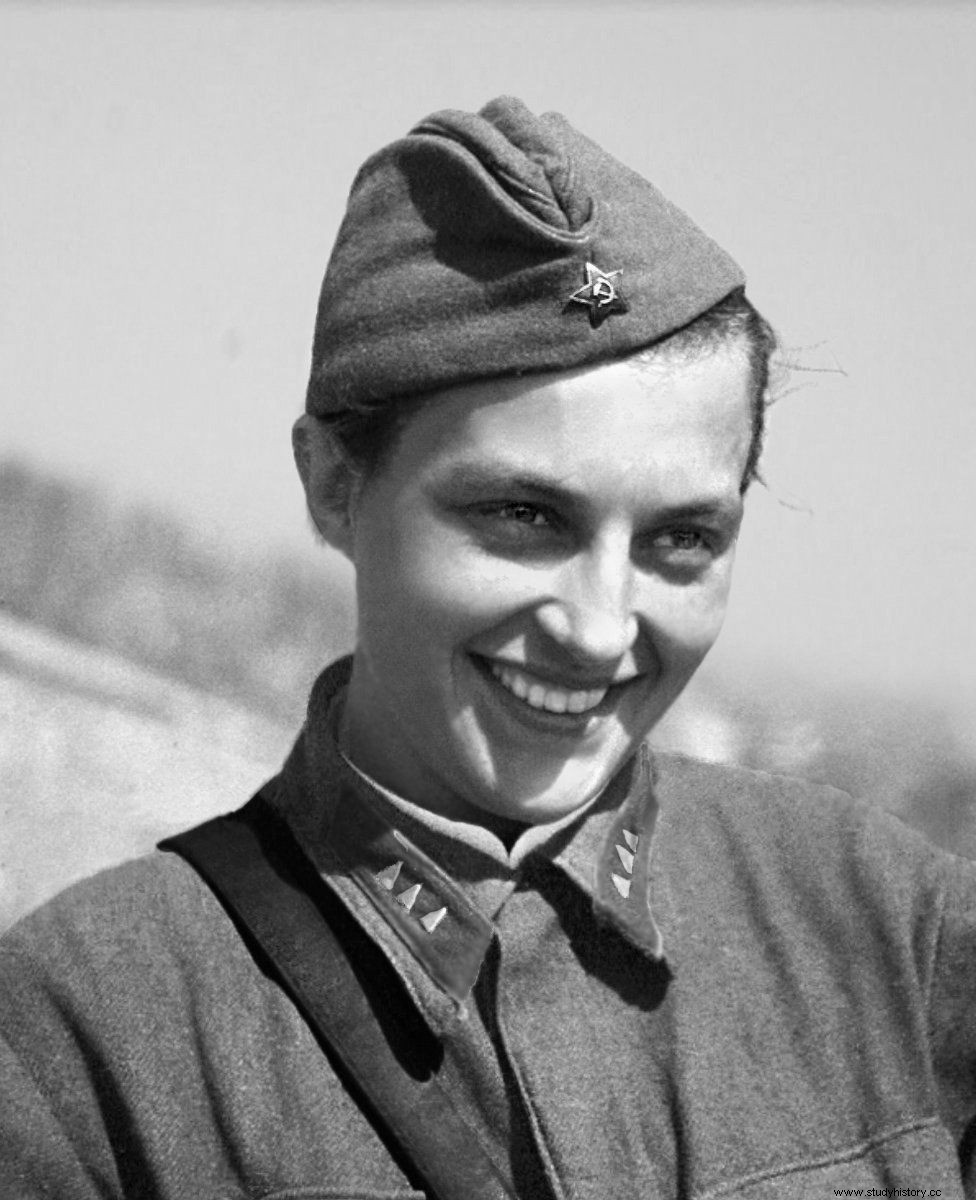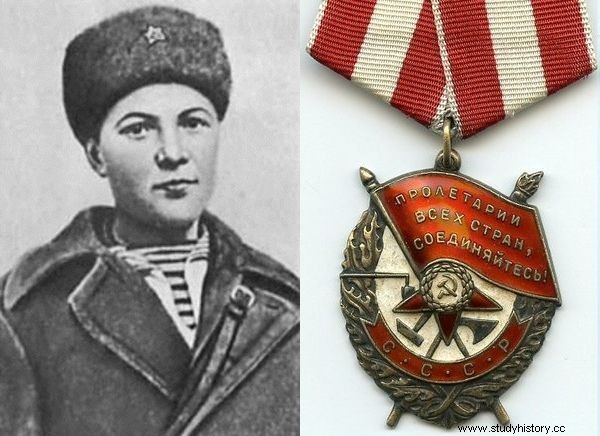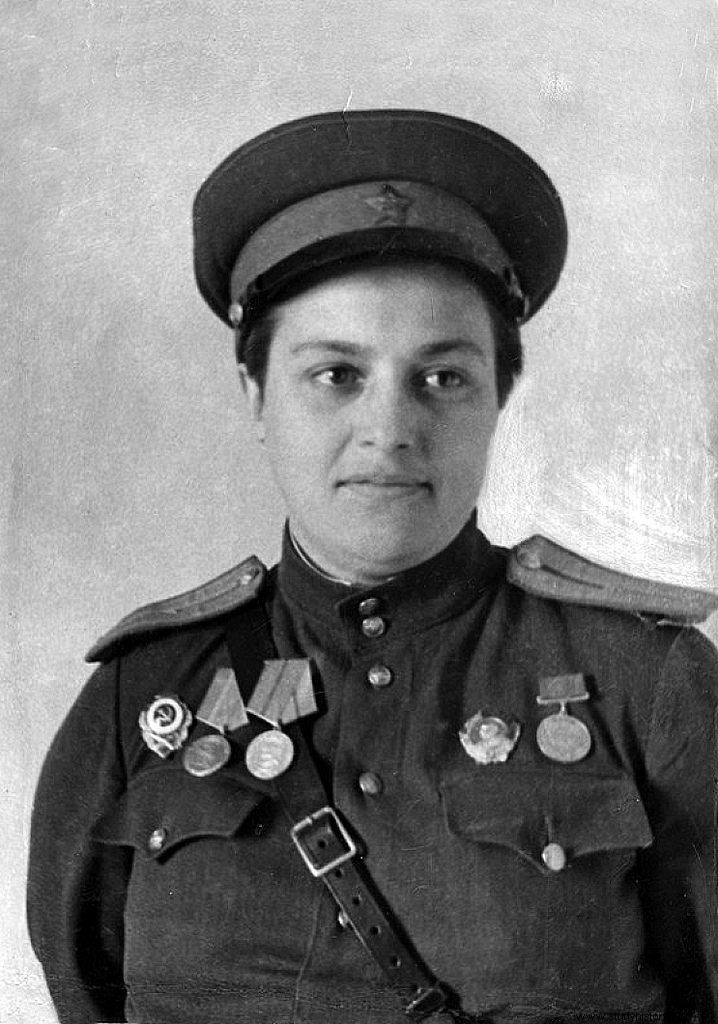Hundreds of killed enemies. The highest Soviet decorations. Tournée in England, Canada and the USA and the title of the most effective sniper rifle in history. Lyudmila Pavlichenko was a real star of the Red Army. However, there are many indications that everything we know about her achievements is in fact a product of Soviet propaganda.
According to the official version, 25-year-old Lyudmila Pavlichenko volunteered for the Red Army in the initial phase of the German invasion of the Soviet Union. As before the war she had undergone shooting training, she became a sniper rifle. The first Wehrmacht soldier was liquidated in August 1941. Then there was the defense of Odessa, during which she killed 187 Germans. After the fall of the city, Lyudmila, together with the Independent Coastal Army in which she served, was transferred to the Crimea.
There, in the eight-month-long battles for Sevastopol, she continued to show murderous effectiveness, additionally fueled by a desire to take revenge on the brown aggressor who killed her husband and son. It was only a severe head wound (and not the first one) sustained during enemy mortar fire that disqualified her from the fight. Until now, however, has managed to send 309 German officers and soldiers to the other world. Among them, 36 were snipers!
The wounded heroine was finally evacuated from the encircled city by submarine to Novorossiysk to convalesce at the end of June. Then she was sent on a tour of England, Canada and the United States, where she told enthusiastic journalists about her accomplishments. At the same time, she agitated for the opening of a second front in Europe by the Western allies.

Pavlichenko was sent west in the fall of 1942 to agitate for the opening of a second front in Europe. Pictured in the United States with two other Soviet delegates.
After her return to the proletarian homeland, she was no longer sent back to the front. Instead, she started training sharpshooters. The command decided that it should not be allowed to be hit by the enemy bullet.
Something is wrong here
This version of Pawliczenko's biography has been repeated for decades, but how much truth is there? Luba Winogradowa, the author of the book "Snipers. Girls from the Red Army ” points out that this story is full of inaccuracies and distortions, and in fact everything we know about the most effective sniper rifle in history can only be the fruit of the Soviet propaganda machine.
The red lamp lights up as soon as we ask ourselves why the earliest Soviet press reports about Pawliczenka come from the period ... when it had almost 200 killed Germans? What's more - as Winogradowa emphasizes:
The story described in the first publication about it in the state press is rather strange. The article was apparently a letter from some sergeant Grigorov. The military decided to inform the country about the exploits of the woman who achieved the best result among all Soviet snipers. Why wasn't a reporter sent to see her?
Years later, the interested party claimed that it was due to the fact that in the first months of the war, no one knew what snipers were doing, and much more attention was paid, for example, to the achievements of the machine gunners. That is why so much was written about Nina Oźniova, who was serving as a machine gun operator in the same regiment as Pavliczenko.
So many killed and where are the orders?
However, there is another explanation. According to this alternative version of events, Pawliczenko did not send wholesale Germans to the sand, but was an imaginary heroine who was urgently needed by the Red Army, losing on all fronts. This is evidenced by, inter alia, the research by the Russian historian Oleg Kaminski, cited by Winogradova.
For example, he established that the Pavlichenko regiment fought in a completely different part of Odessa than the sniper later claimed. In addition, she maintained that her immediate superior, Ivan Yefimovich Petrov, had ordered her to choose a sniper platoon to command. The problem is that there weren't any sniper platoons in the Red Army at that time. What's more, at the front, Pawliczenko achieved the rank of senior sergeant, and therefore could lead to a fight at most by a team.

Pavlichenko claimed that she had killed "187 fascists" until the fall of Odessa. However, she was not rewarded in any way for her alleged achievements. It gives food for thought, since decorations were awarded even to chefs or artists of the front brigades.
This is not all, as we read in "Sniper boots. The girls of the Red Army ” :
Pavlichenko, who "shot one hundred and eighty-seven fascists", was not awarded even for the fight near Odessa. How it's possible? After all, not only soldiers who stood out with something were awarded at that time, but also cooks, administration workers and even artists of the front brigades to raise morale in the army.
It is all the more strange that for ten killed or wounded enemies, the Soviet sniper received a medal, twenty guaranteed the order. Seventy-Five is a surefire title of a hero of the Soviet Union. So Pavlichenko should have become one twice by the end of 1941.
Meanwhile, she had to wait for her first order until the fall of Sevastopol. She received it during her convalescence in a Novorossiysk hospital. The Golden Star of the Hero of the Soviet Union decorated her breast only after she returned from overseas in 1943!

Women defending Odessa also received high decorations. One of them was Nina Oźniowa, decorated with the Order of the Red Banner.
Someone may say that she was a woman, and therefore her successes were underestimated. It is possible, but by a strange coincidence, it was not experienced by the aforementioned Nina Oźniowa, who received the Order of the Red Banner for her services during the battles for Sevastopol. Therefore, the lack of decorations for an allegedly deadly effective sniper rifle does not have to hide male chauvinism.
Counting problems and vanishing scars
There are many more inaccuracies and questions. Pawliczenko herself claimed that she gave herself a three-hundredth German for her birthday, which she celebrated on July 12. Meanwhile, according to the official version, after she was injured, she was taken from the encircled city by submarine on June 22. Let's assume for a moment that both she and her biographers have mixed up the wound and evacuation dates. The question remains, however, when and where did she shoot the next nine enemies?
Certainly not during the tour of England, Canada and the United States, which she set out on in the fall of 1942. It also brings another dose of doubt. In the photos taken during it, on her young, smooth face, there are no traces of an allegedly deep wound to her face (she herself claimed that it was a cheekbone). Maybe it was the result of the unprecedented talents of Soviet surgeons, or maybe there was simply no wound?
What's more, as we read in Winogradowa, reportedly during her less than a year of service on the front, Pavliczenko was injured three times and suffered four head injuries. Meanwhile, there are no visible scars.
It is also food for thought that the allegedly perfect sniper rifle, which was supposed to be Pawliczenko, constantly refused to present its legendary skills overseas. It was quite different with the accompanying great sharpshooter, Vladimir Pczelintsev, who had no problem with it. In the end, we managed to persuade a sniper rifle to present her craftsmanship only once, but as Pczelintsev said, she fired "on a separate".
Documents were lost, but son survived
It is not only Pawliczenko's combat achievements that raise doubts. She also missed the truth when speaking about her private life in interviews. For example, she claimed that her husband and son had died during the siege of Sevastopol. Meanwhile, she divorced Alexei Pawliczenka shortly after her marriage in 1932, and Rostisław survived the war and died only in 2007.

There is no point in looking for scars on Pavliczenko's face, as allegedly heavy wounds on his face.
Unfortunately, as Luba Winogradowa emphasizes in the already quoted book "Snipers. Girls from the Red Army ” :
All the archives of the Independent Maritime Army in which Lyudmila Pavlichenko served were lost when it was broken. No documents have survived that could show how many hits Pawliczenko had on her account or even that she was a sniper rifle in her regiment. Everything we know about her, she told herself, and the stories she tells are full of contradictions.
Maybe it's time to stop praising her and placing her in the rankings of the most effective sharpshooters in history? After all, the Red Army had many real heroes and they should be given attention.
Source:
Trivia is the essence of our website. Short materials devoted to interesting, surprising details from the past, strange news from the old press. Reading that will take you no more than 3 minutes, based on single sources. This particular material is based on:
- Luba Winogradowa, Snipers. Girls from the Red Army , Horizon 2018 sign.
